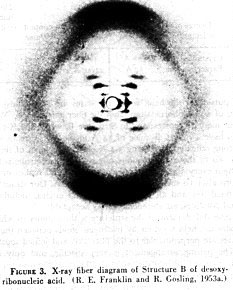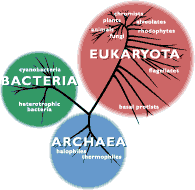 The material world is at once comprehendible and enigmatic.
To this extent light enables our perception as a door to knowledge. The doorway is really an entry to a labyrinthine process of being capable
of distinguishing surface from underlying features in an effort to dispel
inherent errors in judgment. All creatures are prone to errors, untimely and
significant mistakes can lead to the outcome of a process we call selection. Once selected, because of the Second Law of Thermodynamics, we can never go backwards.
The material world is at once comprehendible and enigmatic.
To this extent light enables our perception as a door to knowledge. The doorway is really an entry to a labyrinthine process of being capable
of distinguishing surface from underlying features in an effort to dispel
inherent errors in judgment. All creatures are prone to errors, untimely and
significant mistakes can lead to the outcome of a process we call selection. Once selected, because of the Second Law of Thermodynamics, we can never go backwards.
Murray Gell-Mann, Stephen Hawking, Michio Kaku, Roger Penrose, Kip Thorne and Brian Greene are
physicists who today understand that at every juncture in the hidden past,
which is also evident in deep space, a set of steps called selection occurred that leads to the
remarkable fact that you and I are here discussing Jacob Bronowski's ideas and Hawking's interpretation of "the origin and fate of the universe."  Examples of this serial selective process include the fact that the Earth is within the habitable zone of a fairly stable mid-sized star (the Sun) and that it has a sufficient mass with an iron core that generates a magnetic field that shields the planet's upper atmosphere from the fierce solar winds. Thus on a physical scale the Earth is just right, not too hot like our sister planet Venus, nor too cold like our smaller sister Mars. There are more and more examples of how fortunate we as a species with a long memory.
Examples of this serial selective process include the fact that the Earth is within the habitable zone of a fairly stable mid-sized star (the Sun) and that it has a sufficient mass with an iron core that generates a magnetic field that shields the planet's upper atmosphere from the fierce solar winds. Thus on a physical scale the Earth is just right, not too hot like our sister planet Venus, nor too cold like our smaller sister Mars. There are more and more examples of how fortunate we as a species with a long memory.
A little history is in order to make the point that modern
physics, chemistry and biology have discovered  --on very many occasions in
that last 100 years –that the hidden processes that engender us in the world
are counter intuitive. That is to say, things exist for reasons we would not
have expected for the world to be as we perceive. At the end of the 19th century prior
to the discovery of x-rays, electrons, radiation and a solution to the paradox
of heat and light, referred to as "black body" radiation, a smugness based
on reliable assumptions permeated the physical science community. It was believed
that with James C Maxwell's equations unifying electricity and magnetism,
and with the explanation of Lord Kelvin's laws of thermodynamics, that the
great discoveries of the physical sciences were complete. Indeed scholars
have written on the "completeness of 19th century science." It is against
this background that Hawking's contributions must be placed in context as just the tip of the ice berg
of physics in the late twentieth century.
--on very many occasions in
that last 100 years –that the hidden processes that engender us in the world
are counter intuitive. That is to say, things exist for reasons we would not
have expected for the world to be as we perceive. At the end of the 19th century prior
to the discovery of x-rays, electrons, radiation and a solution to the paradox
of heat and light, referred to as "black body" radiation, a smugness based
on reliable assumptions permeated the physical science community. It was believed
that with James C Maxwell's equations unifying electricity and magnetism,
and with the explanation of Lord Kelvin's laws of thermodynamics, that the
great discoveries of the physical sciences were complete. Indeed scholars
have written on the "completeness of 19th century science." It is against
this background that Hawking's contributions must be placed in context as just the tip of the ice berg
of physics in the late twentieth century.
A sea change, if you will, was occurring in experimental physics from 1913 until July 4, 2012 that would soon leave the so called "positive" assumption of a mathematically based, experimentally verifiable, and logically deductive body of knowledge about atoms, heat and light stranded and apart from the flow of new research beginning with Wilhelm Roentgen's realization that apparently "invisible forces" were responsible for the exposure of a photographic plate which Henri Becquerel had carefully kept in a dark envelope in a apparently unlit draw. Like the discovery of the Top Quark in 1995, the finding of the predicted Higgs Boson, seventeen years later, had revealed a startling and substantially different material dynamics that is happening beyond our senses capacity to capture and comprehend.
Within a generation an incomplete body of knowledge had emerged about both the really very small and the extremely enormous bodies in the cosmos. This emergence was due largely to two significant and basically irreconcilable revolutions in thought. The first is called quantum mechanics and the second is called the special and general theories of relativity. By 1920, these new bodies of evidence, mathematically predictive and heuristically verifiable by both observation and quantitative reasoning created a partial unification and a debate in physics that remains to this day, the unfinished business on the highways to "a theory of everything."
Among the numerous markers along the way three findings are so significant that they have changes our assumptions about how we know about our perception of and actions in the material world. The first of these four, counter intuitive findings are that time and space are one entity called space-time. Second is that light, or radiation, or as Max Plank suggested the light quantum is a form of electromagnetic radiation that can demonstrably be tested and revealed as either a wave, or as a particle. [ For a model of the Bohr atom see this animation.] Thus all electromagnetic radiation from x-rays to microwaves in your kitchen's electronic oven are both waves and particles with a particular frequency and a measurable level of force (mass times velocity squared). If these two assumptions were not unsettling enough to the ideal of completeness, the third assumption and the last assumption known as "the uncertainty principle," moved well away from the notion of positive science of the 1880s. The third assumption, still incomplete in the late 1920s and related to the uncertainty principle is that atoms are not the elementary particles of matter, once envisioned by Dalton and chemists of the 19th century. Instead the third assumption is that there exist smaller, highly energetic and fully observable with the right instruments: sub-atomic particles. It is the behavior of one of these creatures, the electron -- with which the uncertainty principle is often associated.
Hawking's discussion of celestial mechanics of astronomical objects rests on these changes and in his passing reference to the "uncertainty principle" he, as other theorists and experimentalists, is left with an–as yet unassailable–piece of evidence. Werner Heisenberg, studied with Niels Bohr, the great mathematician and physicist who helped craft our understanding of the hydrogen nuclei (simplest building block of the chemical elements) and a pioneer of quantum mechanics. Heisenberg asserted that there was a limit to what physicists could determine about the subatomic behavior of electrons. His uncertainty principle suggested that if an observer (with instrumentation) were able to isolate the precise location of an electron they would be unable to measure the speed at which the nearly massless and negatively charged particle encircled the atomic nuclei. Likewise he suggested that if an observer were to know the velocity of the electron, then there was no way to predict the precise location of the object under scrutiny. It is not that we cannot know anything with certainty. Instead the "the uncertainty principle," refers to a quite special and peculiar case of electrons movement about atomic nuclei. The assertion holds that if you know the "position" of an electron you cannot with certainty ascertain its velocity. And it also holds that if you know the velocity of the electron you will be unable to verify the electron's location. Hence, atomic nuclei were not little solar systems.
 Part of this uncertainty principle which introduces a paradox
into scientific research is based on the fact that we probe the world with
either visible light or electrons in electron microscopes, or with x-rays
in x-ray crystallography, or with particle beams in linear accelerators of
cyclotrons and in each case we disturb the motion of the very, really very
small world of subatomic particles. The inhabitants of the subatomic world
are neutrons, protons electrons and about sixty other creatures that inhabit
a cosmos well removed from our perception, but intimately enmeshed in our
everyday experiences. This microcosm is now called the "femto universe" or "microcosmos" and
it behaves according to quantum mechanical rules that can not be reconciled
with classical, or Newtonian mechanics used today to describe gravity, planetary
motion and cosmic or stellar evolution.
Part of this uncertainty principle which introduces a paradox
into scientific research is based on the fact that we probe the world with
either visible light or electrons in electron microscopes, or with x-rays
in x-ray crystallography, or with particle beams in linear accelerators of
cyclotrons and in each case we disturb the motion of the very, really very
small world of subatomic particles. The inhabitants of the subatomic world
are neutrons, protons electrons and about sixty other creatures that inhabit
a cosmos well removed from our perception, but intimately enmeshed in our
everyday experiences. This microcosm is now called the "femto universe" or "microcosmos" and
it behaves according to quantum mechanical rules that can not be reconciled
with classical, or Newtonian mechanics used today to describe gravity, planetary
motion and cosmic or stellar evolution.
 Ultimately the universe is built up of layer upon layer of
necessary levels of organization. But the behavior we examine and predict
at or within any one layer, say of atomic nuclei as opposed to complex molecules
(several flights removed from electrons), is not sufficient to explain the
reactions we measure on the adjacent or contingent levels of organization.
It is as if these "worlds within worlds" were not so distant relations with
whom we have never communicated, but together were derived from the same substance.
These four counter intuitive assumptions that are so alien from our day to
day experiences, perception and awareness are just a brief sketch of the paradoxes
which underlie Hawking's discussion of worldviews and general relativity.
The world may remain beyond our comprehension, but it may be apprehended with
some uncertainty forever lurking in the "details." The uncertainty is there
to remind us that error is the handmaid of knowing and that real insight requires
a health capacity to utilize paradoxes to see beyond the surface mirage, into
"the heart of darkness."
Ultimately the universe is built up of layer upon layer of
necessary levels of organization. But the behavior we examine and predict
at or within any one layer, say of atomic nuclei as opposed to complex molecules
(several flights removed from electrons), is not sufficient to explain the
reactions we measure on the adjacent or contingent levels of organization.
It is as if these "worlds within worlds" were not so distant relations with
whom we have never communicated, but together were derived from the same substance.
These four counter intuitive assumptions that are so alien from our day to
day experiences, perception and awareness are just a brief sketch of the paradoxes
which underlie Hawking's discussion of worldviews and general relativity.
The world may remain beyond our comprehension, but it may be apprehended with
some uncertainty forever lurking in the "details." The uncertainty is there
to remind us that error is the handmaid of knowing and that real insight requires
a health capacity to utilize paradoxes to see beyond the surface mirage, into
"the heart of darkness."
![]() Nature can not reassure us to any great extent without
fooling us at the same time, because we want to believe, even when barriers
to accuracy thwart our faith in reason. Instead we remain children as Newton
felt us to be, and stranded as Einstein realized, halfway between microcosm
and macrocosm seeking to know, how the expanding universe could possibly have
left our kind on this oasis in the vast emptiness, of a fairly indistinguishable
galaxy, we affectionately have named the "Milky Way."
Nature can not reassure us to any great extent without
fooling us at the same time, because we want to believe, even when barriers
to accuracy thwart our faith in reason. Instead we remain children as Newton
felt us to be, and stranded as Einstein realized, halfway between microcosm
and macrocosm seeking to know, how the expanding universe could possibly have
left our kind on this oasis in the vast emptiness, of a fairly indistinguishable
galaxy, we affectionately have named the "Milky Way."

